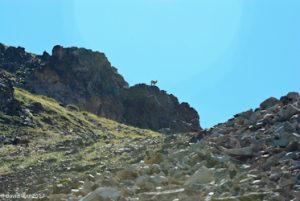Generally True Patterns: A New Natural History of Recognizing Ourselves as a Part of Nature
Part 7 of 22
Chapter 3 Part II The Search for Boundaries
In this nonlinear universe, outcomes do not owe their trajectories to senselessness. When an action takes place, it does so based on mathematical probabilities of outcome. Outcomes may be uncertain: the direction of subatomic particles following collision in an accelerator. They can be clearly deterministic: a plant seed lands in fertile soil or on a large rock either germinating or not. They may be especially complex, particularly in the social realm with the generation of new more highly structured organizational forms: the International Monetary Fund is created at the end of World War II as a mechanism of economic stability. The importance of this process is that once a decision or action has been taken, the course that ensues is irreversible, but also subject to further change with the next input of energy.
Agents within a system will be altered by energy input (pollution kills off organisms) and the system may self-organize into a new form (a drained swamp becomes a barren plain with an entirely new component of organisms). Our interpretation may be of change as creative or destructive. The introduction of wolves into Yellowstone National Park fostered an expansion of the wolf gene pool. That change, however, caused a rapid decline of the coyote population and a slower decline in the mountain lion population as the more efficient wolves out competed other large predators. The predator-prey system in the park self-organized into a new form with unanticipated consequences such as elk more often retreating from riparian areas resulting in less trampling of fragile locations. Elk shy away from aspens where they are more easily ambushed by wolves, with the result that aspens experience more growth in summer and provide more forage for elk in winter when the groves less easily conceal wolves.
This relationship becomes more complex because of the energy input by humans in making the decision to reintroduce the wolves. This input of money (to trap, transport, and release wolves) and political will (wolves valued as an intrinsic part of wild-nature in the park) is as much a natural process as wolves killing off their coyote competitors or elk learning to move away from brushy streams. The interpretive and evaluative part of this process (Was reintroduction of wolves a wise decision?) is equally a natural process. The consequences of both conceptualization (creating a set of environmental values) and physical action (introducing wolves) are examples of forms of conversion. It is unavoidable that all actions by humans are natural regardless of how wise or unwise such decisions might become in retrospect. This is why dealing with the person/nature split is of vital importance: all of our decisions send out disturbances throughout the world.
An action by an agent will determine the next step in a process, even if in a non-predictive manner. All actions taken by us from conceptualizing new weapons of mass destruction to flooding farm fields with insecticides can be understood as experiments in forms of conversion. We add the energy and see what happens. We can take a step towards a person/nature connection by considering probabilities of consequences on all aspects of the three realms before actions are initiated. The significance of deciding which world fisheries to expand, contract, or close, or of whether to try atmosphere dimming to control global warming is of wide reaching importance. Not understanding (or even acknowledging) the person/nature connection could be fatal for ourselves and other species.
Forms of conversion take this generally true pattern:
Instability within a system leads to change.
Without instability there is no chance for creativity. New order arises from past instability. Any system open to energy input will change over time. Even energy expended to ward off change and maintain stability (a corporate official covering up losses from shareholders) can lead to instability. Change compounds so that evolutionary rules themselves can alter dramatically. Eons ago oxygen-intolerant bacteria released oxygen as a waste product. This gas built up in the atmosphere until poisoning many early single cell organisms out of existence. The presence of oxygen at a certain concentration became deterministic of the mass extermination that followed. A series of small actions such as the release of carbon dioxide from a single motor vehicle causes quantifiable alteration of the atmospheric system when, in aggregate, many individuals repeat the same small action.
Instability within a system leads to non-predictive outcomes for individuals, but pattern recognition leads to an understanding of outcomes on a larger scale. Within living systems, the collective actions of individuals on other individuals have immediate consequences. Off the California coast, sea lions swim in roughly circular patterns around schools of fish forcing them to bunch. By concentrating the fish, occasional forays into their midst by the predators results in a higher probability that an individual sea lion will catch an individual fish. At the same time, pelicans attracted to the motion of fish and sea lions dive into the center of the action. The situation is one of numbers but also of individual luck in hunting. The outcome of such situations is one of immediate life or death consequences for individuals, but also of aggregate outcomes over time leading to species continuation or extinction. While fishing success for the fishers as a whole is probable, the success rate for any one fisher cannot be predicted. The chances of any one particular fish being eaten can be expressed as a probability but not as a certainty.
There is no static nature, only a state of constant, disconcerting, and unrelenting creativity, final outcome unknown. As energy moves through a system of planets, sea lions, or economies, decisions are made, actions taken, forms of conversion build up into novel events then break down again to take yet another new shape. Every system is ultimately configured movement.
Next essay: Chapter 4 Part I Connection and Separation

